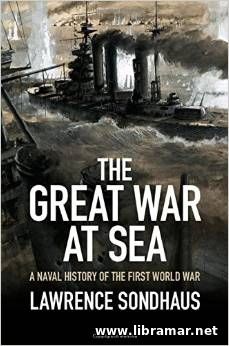 The document presents a newly told naval history of the World War I revealing the major decisive contributions of the sea war to the victory of the Allied Forces. In a global account, the author of this volume, Professor Lawrence Sondhaus with the profound knowledge and understanding of the Navy, is tracing the course of the naval campaigns undertaken in the Mediterranean and Baltic Seas, Adriatic and North Seas, and Atlantic, examining the important role of the critical technical innovations in the design and operational performance of the vessels, fire power and wireless means of communication.
The author has charted how exactly the supremacy of the Allied Forces did lead the Central Powers to revolutionizing the naval warfare through the pursuing of the unrestricted underwater warfare, and ultimately prompting Americans to enter the war. The victory in the war against the submarines following the success in clearing the seas of Kriegsmarine cruisers, left the Allie Forces free to use the sea lanes of the world for the transportation of the supplies and people to Europe from the territories located overseas, including United Stated, and this has eventually proven to be one of the major decisive factors in the victory.
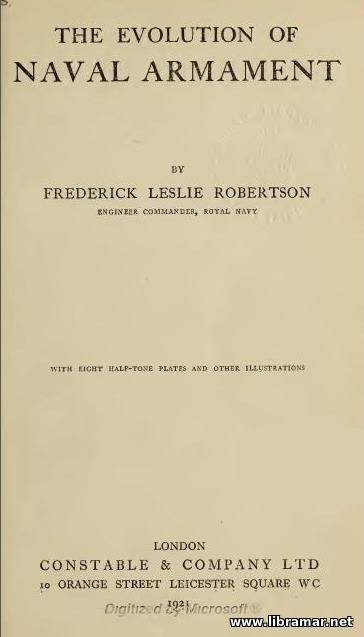 The present book was originally prepared by the prominent Engineer Commander of the Royal British Navy, Mr. Frederick Leslie Robertson. In his brilliant work he tried to trace the whole process of evolution of the smooth-bore guns, rifle guns, shell guns, carronades together with the machinery propelling them, during the "age of fighting sail" and up to the introduction of the ironclads.
This document is perfectly detailed; it is including the expert appraisals of the different technical developments that did take over the period covered, in a very accessible style of writings. In fact, the content of this remarkable title presents an excellent and professional study of the naval artillery in the historical period 1500-1870. It consists of more than three hundred pages of valuable information supplemented with numerous technical drawings providing some additional information.
The book was first released almost a century ago; however, the information and data included by the author in his volume allows it to retain the popularity among the naval historians, naval warfare experts, enthusiasts and all other categories of readers all around the world. We recommend this book to all people who are willing to get more knowledge about the naval armament of the past times and its evolution.
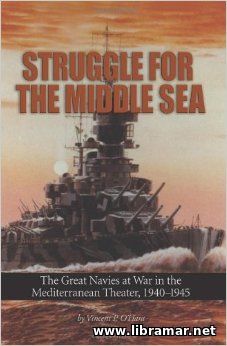 Enrico Ricciardi was a young midshipman fresh from the Livorno Naval Academy serving aboard the light cruiser Eugenio di Savoia, flagship of Rear Admiral Luigi Sansonetti's 7th (Cruiser) Division. Eugenio di Savoia was about to fight in Italy's first fleet engagement against Great Britain. Ricciardi remembered his admiral's reaction when combat commenced: "When we saw the first salvo, even before the sound reached us.
Admiral Sansonetti excitedly placed his hand on my shoulder and said to me these exact words. 'Take a log sheet and note this down: at 1520 on 9 July 1940 on the Ionian Sea an Italian battle fleet fired its first gunshots against the English.' He added, 'This is a historic moment, and you. young man. should be proud to be living it.'" Aboard the British warships, similar excitement reigned when the signal "Enemy battle fleet in sight" fluttered up HMS Neptune's halyards. The British commander. Admiral Andrew Browne Cunningham, noted this was the first time such a signal had been seen in the Mediterranean since the time of Nelson.
Italy declared war on 10 June 1940. nine months into the conflict that became World War II. The Action off Calabria, as this engagement is known in English histories, was the war's first fleet clash and Britain's first attempt to establish sea control in the central Mediterranean. Accordingly expectations ran high, but rather than leading to a crushing naval victory, like Trafalgar. Calabria proved to be just the opening round in a protracted and bitter campaign that ultimately enmeshed five of the world's six great navies and dragged on to the very end of the European war...
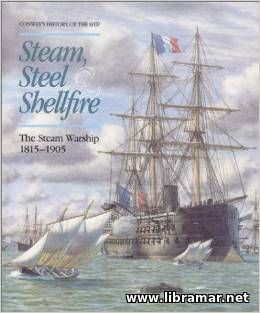 This is the fourth title in an ambitious programme of 12 volumes intended to provide the first detailed and comprehensive account of the technology that shaped the human history. To tell a coherent story, in a more readable form than is usual with encyclopedias, each volume takes the form of independent chapters, all by recognized authorities in the field.
Most chapters are devoted specifically to the development of ships, but others deal with more general topics like "Guns and Armour" or "Machinery" that relate to many ship types, thus avoiding repetition and giving added depth to the reader's understanding of the factors influencing ship design. Some degree of generalization is inevitable when tackling a subject of this breadth, but wherever possible the specific details of ships and their characteristics have been included (a table of typical ships for each relevant chapter includes a convenient summary of data from which the reader can chart the evolution of the ship type concerned).
Except for the earliest craft, the series is confined to seagoing vessels; to have included boats would have increased the scope of an already massive task. The history of the ship is not a romanticized story of epic battles and heroic voyages but equally it is not simply a matter of technological advances. Ships were built to carry out particular tasks and their design was as much determined by the experience of that employment - the lessons of war, or the conditions of trade, for example - as purely technical innovation. Throughout this series an attempt has been made ю keep this clearly in view, to describe the what and when of development without losing sight of the why. The series is aimed at those with some knowledge of, and interest in, ships and the sea.
It would have been impossible to make a contribution of any value to the subject if it had been pitched at the level of the complete novice, so while there is an extensive glossary, for example, it assumes an understanding of the most basic nautical terras. Similarly, the bibliography avoids very general works and concentrates on those which will broaden or deepen the reader's understanding beyond the level of the History of the Ship. The intention is not to inform genuine experts in their particular area of expertise, but to provide them with the best available single-volume summaries of less familiar fields.
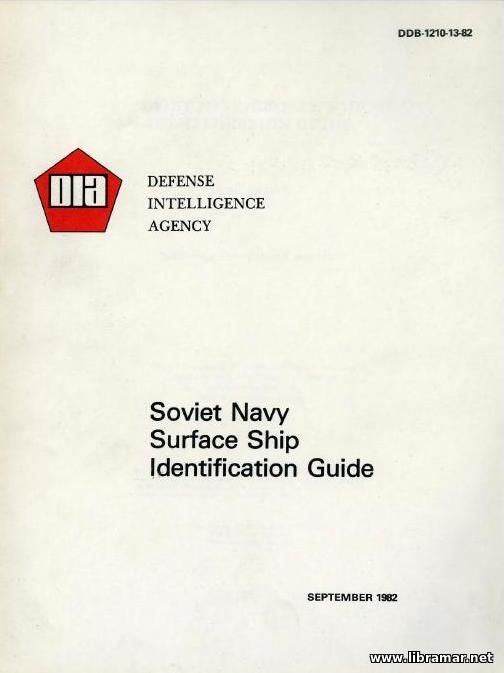 This is the officially released document used by the DIA, standing for the "Defense Intelligence Agency". The content of this document presents the formal unclassified guide to the surface vessels that served there in the Soviet Navy fleet; the most part of the surface ship classes operated by the Soviet Navy has been covered.
The publication of the technical information contained in the document at the unclassified level was actually believed to enhance its utility as such approach would allow to ensure the dissemination of the content to the wide audience. The publication has been prepared on the basis of numerous very valuable contributions that were provided by the world recognized experts in the field. The book is arranged in twelve major chapters by the vessel types. The opening chapter is addressing the aircraft carriers, followed by the chapters dedicated to the patrol combatants, amphibious warfare vessels, principal surface combatants and roadstead crafts.
The remainder of the publication covers the mine warfare crafts, coastal patrol-river crafts, material support vessels, underway replenishment vessels and fleet support ships. The last chapter of this volume is providing the necessary information relating to the vessels that belong to the types not covered within the eleven other chapters.
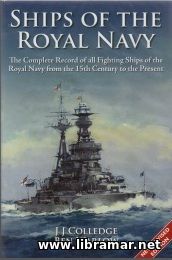 The publication was prepared and released to provide all people interested in naval history with the absolutely completed record of literally all fighting vessels of the British Royal Navy Fleet starting from the fifteenth century and up to the present time. This volume is the updated version of the one released in 2003 - it has been significantly updated and revised in order to include the vessels which were added to the Royal Navy.
The author has also included in this publication some ships constructed as warships, for example motor gun boats. coastal forces etc. We would definitely recommend to treat this volume as a genuine ABS of the vessels belonging to the Royal Navy - the content of the book contains the results of the researches conducted by the author. Needless to say that the information provided in the pages of this "encyclopedia" of Royal Navy fleet will be greatly appreciated by the naval history enthusiasts, professional naval historians and all other persons with the interest in naval wars.
The decision was made by the author to omit the technical details of the engines installed on the steam vessels for the sake of brevity. Most of the modern ships included in the book are provided only with the tonnage as, actually, all other technical info is readily available everywhere and may be easily obtained from the reference books.
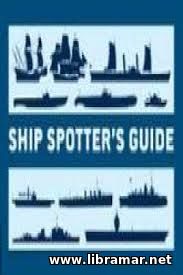 Warships have existed almost as long as mankind has plied the seas. The first recorded warships date from more than 3.000 years ago. and while their appearance has changed markedly, the role of these ships has largely remained unchanged. In their simplest and oldest role, warships exist to protect the sea lanes, and to safeguard friendly ships. How this is achieved can vary enormously.
In the Ancient World, it meant keeping the seas free of pirates and maintaining a fleet to counter an attack by enemy squadrons. In the great 'Age of Fighting Sail' warships had become more specialized, and so the job of protecting the sea lanes was carried out by smaller warships, while the larger ones - the ships-of-the-line - stood ready to fight the enemy for control of the seas.
The advent of steam and steel did little to alter this basic role, or change the division of functions. If anything, warships became even more divided by form and function. In theory the advent of the ironclad rendered all existing warships obsolete, but wooden-hulled ships still had a role to play as commerce raiders or as patrol vessels, gunboats or pirate hunters. The next great revolution came in 1905. with the launch of HMS Dreadnought. For the second time in half a century existing warships were rendered obsolete, and so a new arms race began - one that arguably was instrumental in the increase of diplomatic tension that led to the outbreak of World War I. In that 'war to end all wars', the great fleets of dreadnoughts faced each other across the North Sea, while other smaller ships established the blockade of Germany and cleared the sea lanes of German shipping.
Ultimately the great clash of dreadnoughts at Jutland in 1916 did less to bring about the end of the war than the hardships created by the Allied blockade. The German response was to launch their U-boats against Allied shipping. This led to a new kind of warfare - or rather a more modem version of the commerce raiding and privatizing of previous centuries. The war also saw the emergence of naval airpower and the creation of the first aircraft carriers.
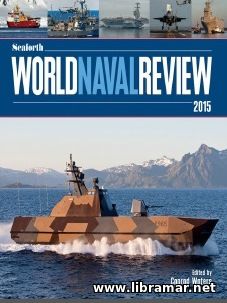 A stem reminder of the "real politics" was provided in March 2014 when Russian forces seized control of the Crimean peninsula from the Ukraine in an almost bloodless operation. Russia's military action a response to the February 2014 revolution in Ukraine that had seen the installation of a pro-European government in Kiev, has been subject to considerable international criticism and the imposition of limited sanctions by the European Union and the United States.
However, as was the case with respect to its invasion of Georgia in 2008, Russia's willingness to flex its military muscle has allowed it to achieve its key objectives, in this case the security of its Black Sea Fleet's main naval base at Sevastopol and the protection of Crimea's ethnic Russian population. The inability of the United States - and of its European allies - to respond decisively to Russia's actions in the Ukraine has come at a time when the limitations of its global influence have started to become more apparent. For example, the Obama administration's failure to act on its previous 'red line" and undertake action against the Syrian chemical weapons attacks on regime opponents has significantly weakened its regional credibility at a time when key regional allies such as Saudi Arabia have become disconcerted about a possible rapprochement with ban.
There has inevitably been much criticism of the administration's lack of action from political opponents, as well as from some more independent commentators. However, its stance arguably reflects the reality of limited public support for further overseas military adventures after the long wars in Afghanistan and Iraq, as well as the need to prioritize defense resources in an era of lower military budgets. Against this backdrop, the United States" hard-headed focus on protecting its Asia-Pacific interests through the Pivot to the Pacific' is undoubtedly correct...
« 1 2 3 4 5 6 7 ... 10 11 » |







